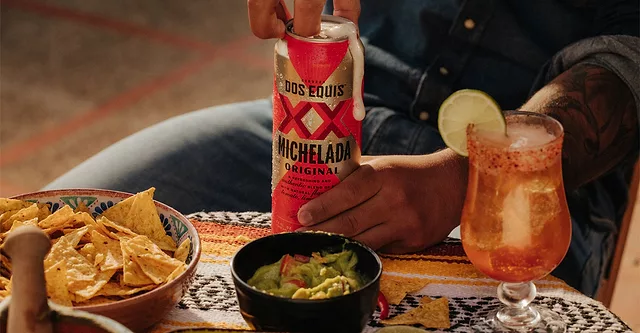Special Report
2024 Beer Report | Imported beer raining with success
March 7, 2024
Special Report
2024 Beer Report | Imported beer raining with success
March 7, 2024Image courtesy of Heineken USA
In basketball, “making it rain” is one of the most common slang phrases thrown around ― symbolizing a player who is hitting a vast number of shots in game. As the U.S. beer market contends with shifts in consumer preferences, one of the legacy segments that is making it rain in terms of sales has been beer imports.
“The import segment had another strong year in 2023 it was up 11.7% in dollars and had the largest absolute growth for a beer segment at plus-$1.1 billion,” say Ryan Toenies, client insights consultant for Circana; and Cara Piotrowski, client insights consultant for Circana, Chicago.
For the 52 weeks ending Jan. 28 in total U.S. multi-outlets, Chicago-based Circana data shows dollar sales for import beer were $11 billion, an increase of 11.1%, while case sales were up 7.6%. This is an improvement from what was reported in Beverage Industry’s 2023 Beer Report, which showed a dollar sales increase of 6.6% and case sales up 1.6% for the 52 weeks ending Jan. 1, 2023.

What is driving the import beer market has been the performance of Mexican beers.
“Mexican imports have been the core driver of the overall import business,” says Jon Berg, vice president of BevAl Thought Leadership at NielsenIQ; and Kaleigh Theriault, director of BevAl Thought Leadership at NielsenIQ, Chicago.
Circana’s Toenies and Piotrowski note that Mexican imports were up 14.2% in 2023, driving much of the segment’s growth, and highlighted some brands that contributed to that performance.
“Modelo Especial was the top dollar growth brand again in 2023 and is now the No. 1 dollar brand in the U.S.,” they say. “Three other Constellation Brands Mexican Imports were in the Top 10 Dollar Share gainers in 2023: Modelo Oro, Pacifico and Corona Extra.”
Brian Sudano, CEO and president of S&D Insights LLC, Norwalk, CT, pinpoints how demographics are playing into Mexican imports popularity.
Looking for a reprint of this article?
From high-res PDFs to custom plaques, order your copy today!
“Demographic and cultural shifts are two major tailwinds for Mexican imports,” he says. “On the cultural side, Mexican food and style have crossed over to the general market. At the same time, they represent 26% of Gen Z consumers and growing as percentage each year.”
Despite Mexican imports’ success, Sudano cautions of the longevity of this performance. “The biggest challenge is how to continue growing Mexican imports while the total beer category continues to decline,” he says.
Yet, Mexican beer is not the only one performing well in the U.S. market.
“Imports from Holland, plus 5.1% in dollars, and Canadian imports, plus 10.9%, had strong 2023 sales and continue to have traction with consumers,” Circana’s Toenies and Piotrowski say.
NielsenIQ’s Berg and Theriault note that “English, German, Irish, and Belgium products all have solid footholds in the U.S.”
Balancing innovation with costs
To help continue the interest that is driving the import beer market, brand owners are focusing on the consumer sects that identify with these brands.
“Aspirational consumers and those who identify with Mexican import brands are helping to fuel the growth cycle that these products now enjoy,” NielsenIQ’s Berg and Theriault say.
Circana’s Toenies and Piotrowski highlight the success of Modelo Oro and Modelo Chelada as examples of innovation fueling import’s performance.
“Modelo Oro had a strong national launch year and is a betterment product,” they say.“ Modelo Chelada Brands continue to drive segment growth as new flavors are introduced.”
S&D Insights’ Sudano notes that innovation in imports expands beyond the products, but also the experience as well as addressing alcohol-free trends.
“Tap rooms to drive consumption experience, trends toward lower/no alcoholic, and flavor are all driving activity within imported beer,” he says.
Tsingtao, an import brand of Paulaner USA, White Plains, NY, took note of these trends when it announced the launch of Tsingtao 0.0, a non-alcohol alternative.
Tsingtao Premium Lager experienced exceptional growth in the United States in 2023 under the guidance of its U.S. importer Paulaner USA, the company notes. Crafted using the finest ingredients and only 63 calories in a bottle, Tsingtao 0.0 offers an option for health-conscious consumers seeking an alcohol-free brew, it adds.
“The demand for Tsingtao Premium Lager has experienced tremendous growth over the past two years and that trend is projected to continue beyond the New Year,” said Steve Hauser, CEO and president of Paulaner USA, the U.S. importer of Tsingtao, in a statement. “With the launch of Tsingtao 0.0, we are tapping into consumers who are reaching for non-alcoholic drinks in their bid to lower their caloric intake. Tsingtao 0.0 provides a great tasting experience, and we’re confident that consumers will enjoy it.”
Top Imported Beers
Source: Circana, Chicago. Total U.S. multi-outlets (grocery, drug, mass merchandisers, convenience, military commissaries, and select club and dollar retail chains) for the 52 weeks ending Jan. 28, 2024.
However, innovations that might not differentiate enough from established products can hamper import beer’s future.
“The biggest challenge the import beer market faces is as innovation continues to come, it could eventually increase segment cannibalization,” Circana’s Toenies and Piotrowski say. “Up to this point that really hasn’t been the case.”
Yet, as innovators create new products to entice consumers, experts note that costs are a concern for the import beer segment.
“Like other segments imports need to be conscious of price increases as well to not slow momentum, but the segment has done a good job in managing them to this point,” Circana’s Toenies and Piotrowski say.
NielsenIQ’s Berg and Theriault explain that “maintaining retail pricing that does not cross over major comparative thresholds thus impacting volume that is growing currently,” is a challenge impacting import beer.
Despite these concerns, import beer looks to be in position to continue its success.









